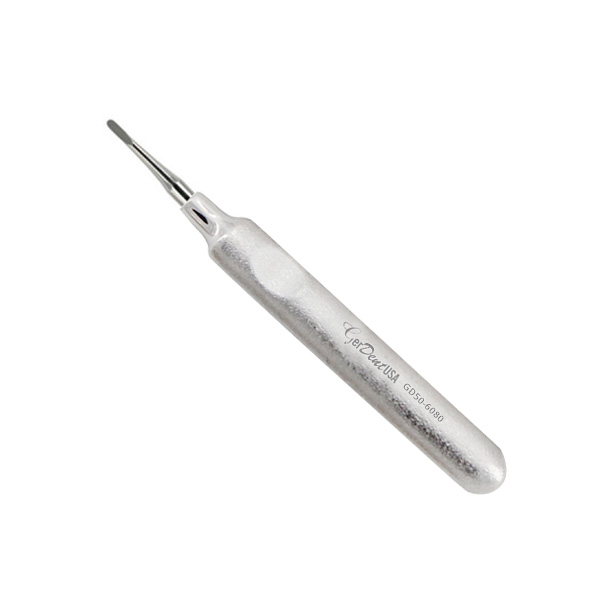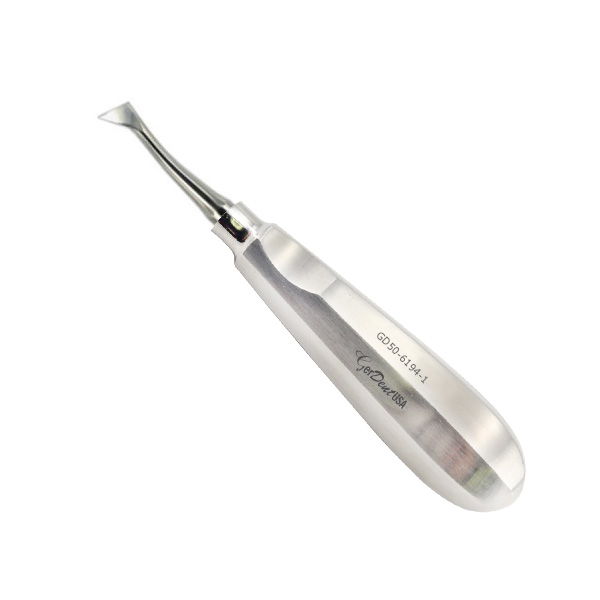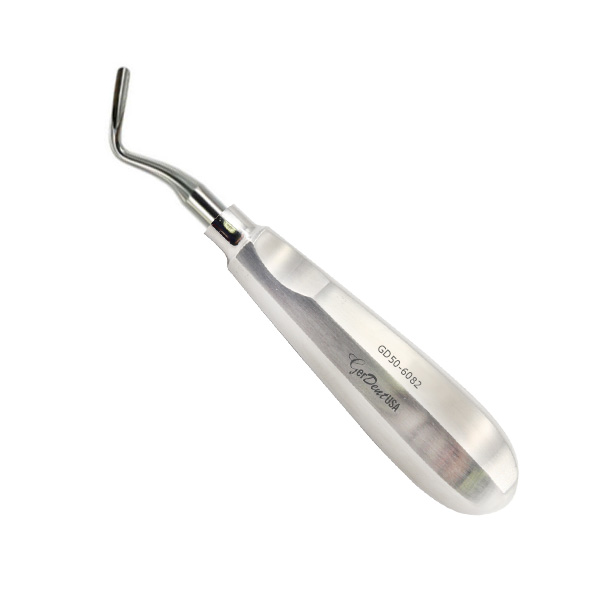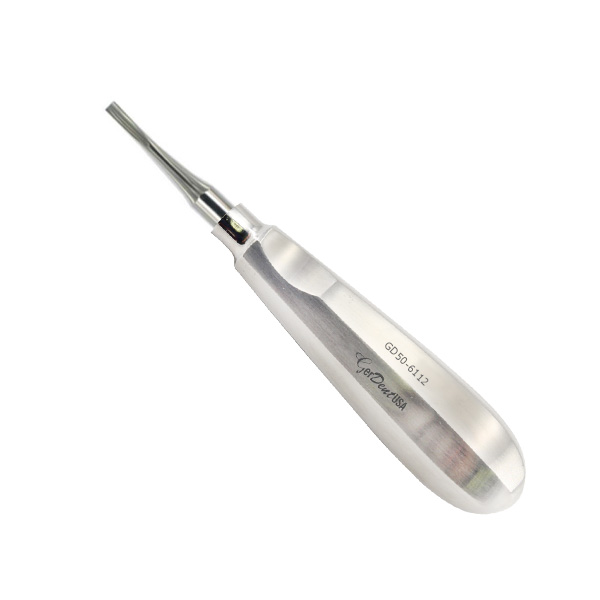No dental extraction procedure can be held without elevators. These are instruments that come in use for the extraction of teeth. The extraction itself requires a myriad of dentistry instruments, some of them are general basic tools that come in use for every procedure. Other tools are special instruments that come in use for the extraction of teeth that may require specialized instruments to pull them out of their sockets.
Teeth can either be removed with forceps or elevators. Elevators also come in use to assist in exodontia. Dental elevators are instruments that luxate the teeth to pull them out of their sockets. Other than that, they also assist in mobilizing broken roots that cannot be grasped by the beaks of forceps.
Parts of the Instrument
An elevator is composed of a handle shank and blade/ working end. The handle is made sturdy for the firm grasping of the instrument by the operator. The shank is either long or short, depending on the preference of the operator and the blades have different designs to engage teeth and roots in obscured areas. Some blade types are listed below:
Straight Blades- Straight Elevator/ Coupland Elevators
Straight-bladed instruments come in use for luxating teeth. The blade has a concave-sided surface. Straight elevators also have an angled blade that is deviated from the shank, examples of these instruments are Potts and Millers elevators
Triangular Blade: Cryer Elevator
These cryer elevators are the second most commonly used dental elevators. They have a Pennate-shaped blade and come in use for removing retained roots, where the adjacent socket is empty.
Pick up Blade: Apical Elevator
These are pickup-type elevators. They come in use for removing retained root tips that cannot be grasped by any other instrument. A hole is dug in the small retained root tip, the apical elevator is then inserted in the hole, and the root tip is pulled out. Buccal bone is used as a fulcrum.
Uses for the Dental Elevators:
The elevators come in use to reflect the mucoperiosteal membrane and they come in use for removing teeth that cannot be engaged by forceps. Other than that, they remove decayed and fractured teeth and roots. Also, Elevators come into use for luxating the teeth before the application of forceps. They make the tooth mobile enough so the forceps can grasp it. Also, they are used by operators to split multirooted teeth and teeth that have grooves cut in them for easy application of elevators and then forceps. Finally, they come into use for removing intraarticular bone.
Indications for elevator use:
Indications for Teeth Removal:
For Malposed teeth: These teeth apply pressure on adjacent teeth, and elevators come into use for removal of such teeth.
For impacted teeth: Impacted teeth have deviated anatomies and forceps beaks are unable to reach the tooth. Hence elevators come in use to luxate them.
Carious teeth: Decayed teeth are easily broken if grasped by forceps. Hence elevators are used to remove them from their sockets.
Tilted teeth: These teeth are tilted and hence there is no use in grabbing them by a Forcep. Forcep beaks are not parallel to the long axis of the tooth and it may be difficult to grab them by forceps.
Indications for Root Removal:
Root removal is accomplished by the elevators if the roots are fractured. Roots fractured at the Gingival line, roots fractured from the middle, and fractured roots in the apical third can be removed by elevators.
Elevators come in different shapes and sizes to suit the operator's needs. Some examples include the Coupland elevator, Apex elevator, Apical elevator, Bernanrd elevator, Cryer elevator, etc.
How to use the Instrument:
There are three ways to use the elevators, They can be used with Lever principle, Wedge principle, Wheel and axle principle. The elevators are most commonly used as levers. The effort arm is longer than the resistance arm to get the mechanical advantage.
The wedging motion is useful when extracting root tips. The elevator is wedged between the bone and tooth and luxated out of the socket. The wheel and axle principle with elevators is used carefully as it can fracture the mandible.
There is a risk of tissue damage while using the elevators. The patient's jaws must be supported throughout the procedure.
Other than that, the Alveolus is supported with the index finger and thumb near the tooth that needs to be extracted. Placement of fingers buccally, labially, and lingually provides the operator with tactile sensation and prevents any force from being exerted on adjacent teeth. The adjacent teeth are never used as fulcrums except if they have to be extracted as well.
All in all, to conclude, elevators are to be used with caution. Excessive forces may damage the surrounding supporting soft and hard tissues of the oral cavity. Other than that, elevators come in use to assist in extractions, and forceps have to be applied to extract the teeth out. Hence, the use of heavy force is not advised.
Instrument Maintenance:
The Instruments are sharp and efficient initially but over time tend to get dull. Hence they must be kept sharp for maximum efficiency. Therefore, instrument maintenance is essential. Routine examination of Dental surgical equipment is necessary to ensure that the instruments are sharp and efficient. Blades tend to get dull due to overuse and they need to be checked before use.
Customization of Instruments:
We offer customization of instruments. Dental surgical equipment comes with a variety of designs and different operators prefer different instruments. We are hence offering customization of instruments for all practicing doctors who may find available instruments hard to use. We encourage such practicing doctors to come up with innovative designs for customization. It will benefit the healthcare market today and in the future. Our reputation in the healthcare sector has made us one of the best out there and our products speak for themselves. We strive to serve the healthcare market today and in the future by delivering excellent quality Surgical equipment for use.





